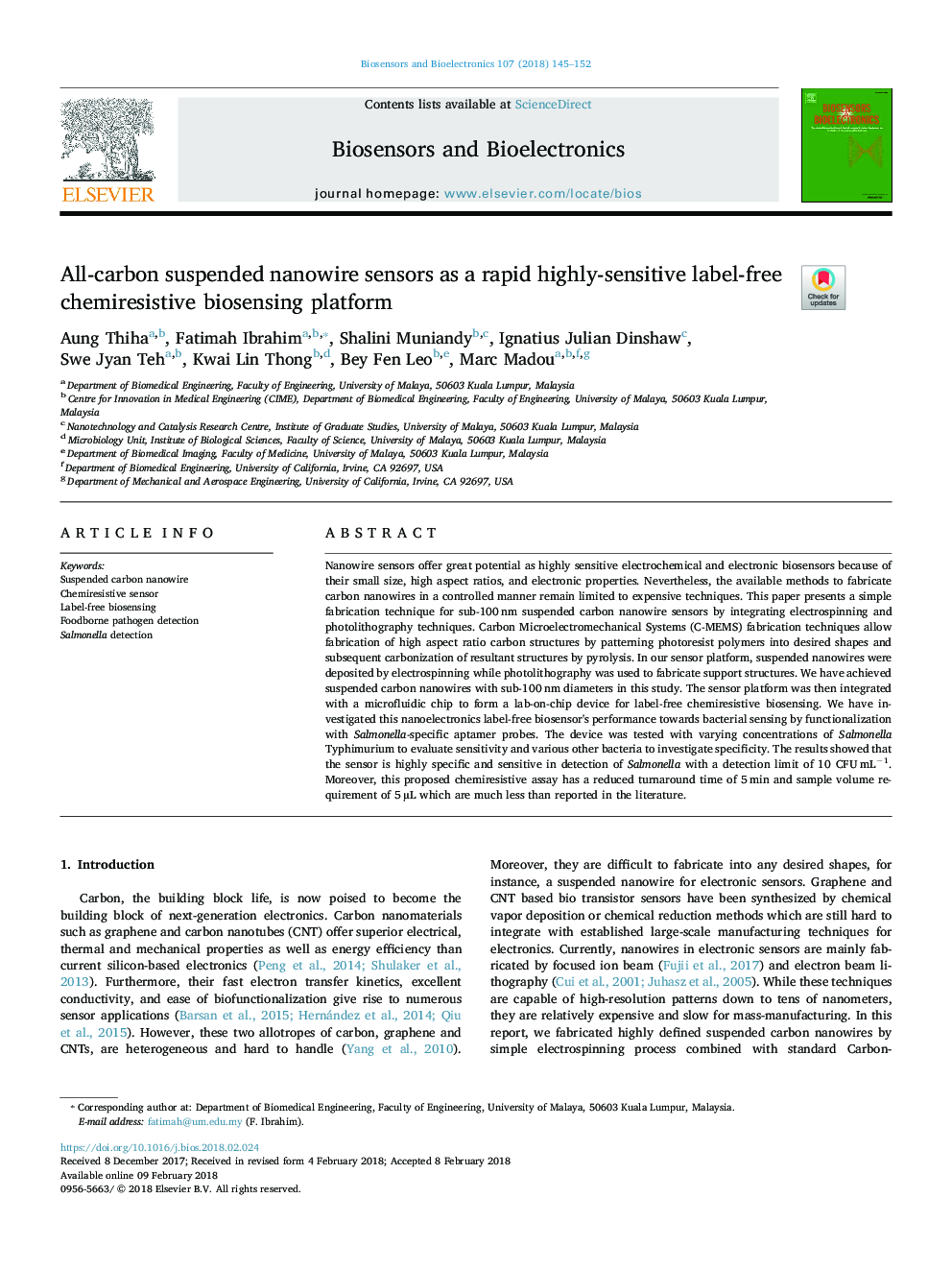| Article ID | Journal | Published Year | Pages | File Type |
|---|---|---|---|---|
| 7229628 | Biosensors and Bioelectronics | 2018 | 8 Pages |
Abstract
Nanowire sensors offer great potential as highly sensitive electrochemical and electronic biosensors because of their small size, high aspect ratios, and electronic properties. Nevertheless, the available methods to fabricate carbon nanowires in a controlled manner remain limited to expensive techniques. This paper presents a simple fabrication technique for sub-100â¯nm suspended carbon nanowire sensors by integrating electrospinning and photolithography techniques. Carbon Microelectromechanical Systems (C-MEMS) fabrication techniques allow fabrication of high aspect ratio carbon structures by patterning photoresist polymers into desired shapes and subsequent carbonization of resultant structures by pyrolysis. In our sensor platform, suspended nanowires were deposited by electrospinning while photolithography was used to fabricate support structures. We have achieved suspended carbon nanowires with sub-100â¯nm diameters in this study. The sensor platform was then integrated with a microfluidic chip to form a lab-on-chip device for label-free chemiresistive biosensing. We have investigated this nanoelectronics label-free biosensor's performance towards bacterial sensing by functionalization with Salmonella-specific aptamer probes. The device was tested with varying concentrations of Salmonella Typhimurium to evaluate sensitivity and various other bacteria to investigate specificity. The results showed that the sensor is highly specific and sensitive in detection of Salmonella with a detection limit of 10 CFUâ¯mLâ1. Moreover, this proposed chemiresistive assay has a reduced turnaround time of 5â¯min and sample volume requirement of 5â¯ÂµL which are much less than reported in the literature.
Related Topics
Physical Sciences and Engineering
Chemistry
Analytical Chemistry
Authors
Aung Thiha, Fatimah Ibrahim, Shalini Muniandy, Ignatius Julian Dinshaw, Swe Jyan Teh, Kwai Lin Thong, Bey Fen Leo, Marc Madou,
